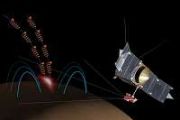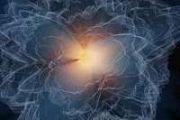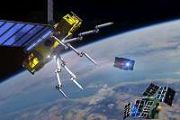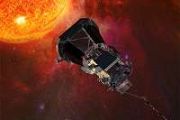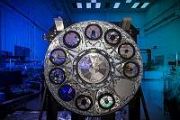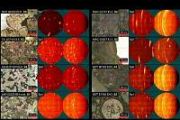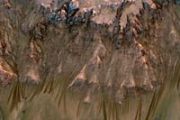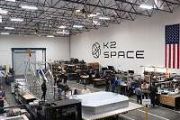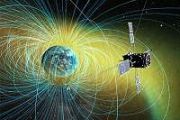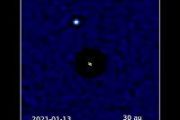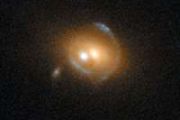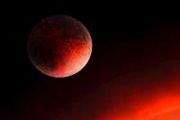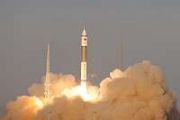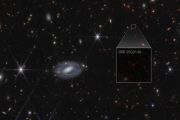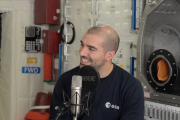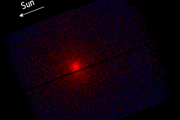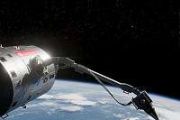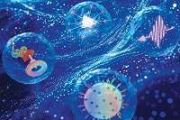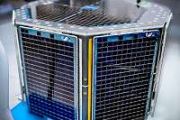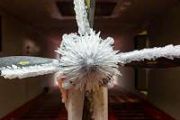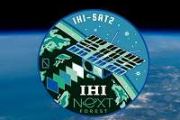
Copernical Team
Perseverance from Team Curiosity: Sols 3752-3754
 On our weekly day off from planning, we awaited the triage data for Drill Sol 1 to confirm if Tapo Caparo seemed more drillable. After receiving the MAHLI image early in the day, we saw DRT scratches and a divot from the preload test, indicating that this upper unit of the Marker Band might not be as hard as our last few drill targets. After the geochemistry data from APXS and ChemCam came down,
On our weekly day off from planning, we awaited the triage data for Drill Sol 1 to confirm if Tapo Caparo seemed more drillable. After receiving the MAHLI image early in the day, we saw DRT scratches and a divot from the preload test, indicating that this upper unit of the Marker Band might not be as hard as our last few drill targets. After the geochemistry data from APXS and ChemCam came down, NASA awards Unit Price Agreement Tracking System
 NASA has awarded a sole source Blanket Purchase Agreement (BPA) under the Office of Strategic Infrastructure to Two Hana Independence Ocean West LLC, of El Segundo, California. The work involves the maintenance, repairs, alterations, and facility assessments/analyses for the NASA Headquarters building located in Washington, D.C.
Under this agreement, the government will issue fixed price B
NASA has awarded a sole source Blanket Purchase Agreement (BPA) under the Office of Strategic Infrastructure to Two Hana Independence Ocean West LLC, of El Segundo, California. The work involves the maintenance, repairs, alterations, and facility assessments/analyses for the NASA Headquarters building located in Washington, D.C.
Under this agreement, the government will issue fixed price B North American Helium brings newest helium facilities into production
 North American Helium Inc. report in late 2022 and January of 2023 it successfully brought two additional helium purification facilities on production. One facility is located approximately 20km southeast of Consul, Saskatchewan and the second is located approximately 15km southwest of Eastend, Saskatchewan.
Commenting on this operational achievement, Mr. Marlon McDougall, President and CO
North American Helium Inc. report in late 2022 and January of 2023 it successfully brought two additional helium purification facilities on production. One facility is located approximately 20km southeast of Consul, Saskatchewan and the second is located approximately 15km southwest of Eastend, Saskatchewan.
Commenting on this operational achievement, Mr. Marlon McDougall, President and CO Tiny Welsh island wins world stargazing fame
 Night falls over Ynys Enlli. The remote Welsh island's sky turns impossibly black.
Planets rise and shooting stars streak overhead, while the Northern Lights send flares of green and red across the sea.
The rugged outcrop has become Europe's first "Dark Skies Sanctuary", one of just 17 places around the world to achieve international recognition for their ultra-low light pollution and p
Night falls over Ynys Enlli. The remote Welsh island's sky turns impossibly black.
Planets rise and shooting stars streak overhead, while the Northern Lights send flares of green and red across the sea.
The rugged outcrop has become Europe's first "Dark Skies Sanctuary", one of just 17 places around the world to achieve international recognition for their ultra-low light pollution and p Rocket Lab Signs Multi-Launch Deal to Deploy Satellite Constellation for Capella Space
 Rocket Lab USA, Inc (Nasdaq: RKLB) has secured a multi-launch deal for a rapid succession of four Electron missions for Capella Space, an American space tech company and the world's leading provider of commercial Synthetic Aperture Radar (SAR) imagery.
Scheduled for launch beginning in the second half of 2023, each Electron mission will deploy a single SAR Earth-imaging Acadia satellite, a
Rocket Lab USA, Inc (Nasdaq: RKLB) has secured a multi-launch deal for a rapid succession of four Electron missions for Capella Space, an American space tech company and the world's leading provider of commercial Synthetic Aperture Radar (SAR) imagery.
Scheduled for launch beginning in the second half of 2023, each Electron mission will deploy a single SAR Earth-imaging Acadia satellite, a Sidus Space to integrate Edge AI for upcoming satellite constellation operations
 Sidus Space, Inc. (NASDAQ:SIDU) has announced the integration of edge AI capabilities into its planned satellite constellation. The Space-as-a-Service satellite company is focused on commercial satellite design, manufacture, launch, and space-based data collection. Under an expanded agreement with Exo-Space, Sidus will use the FeatherEdge AI platform to provide near real-time intelligence derive
Sidus Space, Inc. (NASDAQ:SIDU) has announced the integration of edge AI capabilities into its planned satellite constellation. The Space-as-a-Service satellite company is focused on commercial satellite design, manufacture, launch, and space-based data collection. Under an expanded agreement with Exo-Space, Sidus will use the FeatherEdge AI platform to provide near real-time intelligence derive Kleos Space joins Ursa Space Virtual Constellation
 Ursa Space Systems, a global satellite intelligence infrastructure provider, has announced that Kleos Space (ASX: KSS), a space-powered defense and intelligence technology company, will join its Virtual Constellation, the world's largest database of satellite imagery from the most trusted SAR, optical, and RF data vendors around the globe.
Kleos intelligence products are available now to p
Ursa Space Systems, a global satellite intelligence infrastructure provider, has announced that Kleos Space (ASX: KSS), a space-powered defense and intelligence technology company, will join its Virtual Constellation, the world's largest database of satellite imagery from the most trusted SAR, optical, and RF data vendors around the globe.
Kleos intelligence products are available now to p Maxar awarded Phase 3b of One World Terrain Contract for US Army
 Maxar Technologies (TSX:MAXR) has been awarded Phase 3b of the U.S. Army's One World Terrain (OWT) prototype Other Transaction Agreement contract.
The OWT program delivers 3D global terrain capability and associated information services that support a fully accessible virtual representation of the physical Earth through the Army network. OWT is a key component of the Army's Synthetic Train
Maxar Technologies (TSX:MAXR) has been awarded Phase 3b of the U.S. Army's One World Terrain (OWT) prototype Other Transaction Agreement contract.
The OWT program delivers 3D global terrain capability and associated information services that support a fully accessible virtual representation of the physical Earth through the Army network. OWT is a key component of the Army's Synthetic Train SpaceX Dragon crew blasts off for ISS
 A SpaceX Falcon 9 rocket blasted off on Thursday to the International Space Station carrying two NASA astronauts, a Russian cosmonaut and the second Emirati to voyage to space.
The SpaceX Dragon Crew-6 mission launched at 12:34 am (0534 GMT) Thursday from Launch Complex 39A at NASA's Kennedy Space Center in Florida, a livestream of the launch showed.
The launch had been scrubbed on Monda
A SpaceX Falcon 9 rocket blasted off on Thursday to the International Space Station carrying two NASA astronauts, a Russian cosmonaut and the second Emirati to voyage to space.
The SpaceX Dragon Crew-6 mission launched at 12:34 am (0534 GMT) Thursday from Launch Complex 39A at NASA's Kennedy Space Center in Florida, a livestream of the launch showed.
The launch had been scrubbed on Monda Researchers find asteroid redirection a viable possibility for planetary defense
 Redirecting near-Earth objects like asteroids before they impact the planet is a viable possibility, according to new research published Wednesday.
Conducted last September, NASA's Double Asteroid Redirection Test proved to be more successful than anticipated, according to the research published in the journal Nature.
In October, NASA confirmed the DART mission successfully alter
Redirecting near-Earth objects like asteroids before they impact the planet is a viable possibility, according to new research published Wednesday.
Conducted last September, NASA's Double Asteroid Redirection Test proved to be more successful than anticipated, according to the research published in the journal Nature.
In October, NASA confirmed the DART mission successfully alter 


